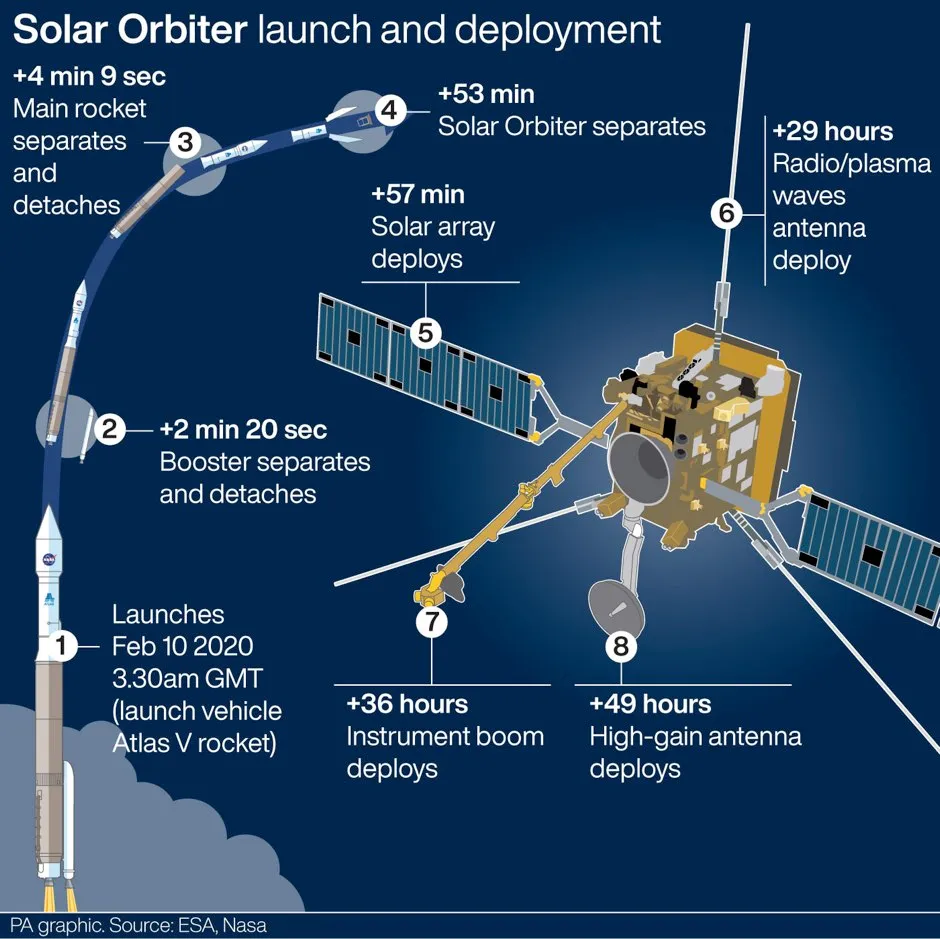A UK-built satellite observing the Sun has made its nearest approach yet, allowing it to take the closest image of our star ever captured.
The European Space Agency’s (ESA) Solar Orbiter came within 77 million km of its surface on Monday, about half the distance between the Sun and Earth.
While NASA’s Parker Solar Probe, launched in 2018, is able to go further, it does not carry telescopes capable of looking directly at the glowing orb.
In the week after this first perihelion – the point in the orbit closest to the Sun – the mission scientists will test the spacecraft’s 10 science instruments, including the six telescopes on board.
Working together, these telescopes should be able to snap the closest photo of the Sun ever – though we will not get to see it until mid-July.
Read more about the Sun:
- A solar exploration: humans' unique relationship with the Sun
- Parker Solar Probe discovers 'strange' and 'unexpected' flips in Sun's magnetic field
- 10 future space missions to look forward to
“We have never taken pictures of the Sun from a closer distance than this,” said Daniel Mueller, ESA’s Solar Orbiter project scientist.
“There have been higher resolution close-ups, e.g. taken by the four-metre Daniel K Inouye Solar Telescope in Hawaii earlier this year.
“But from Earth, with the atmosphere between the telescope and the Sun, you can only see a small part of the solar spectrum that you can see from space.”
The test is being carried out to prove that Solar Orbiter’s telescopes are up and ready for future scientific observations.
Other instruments will also provide an insight into the environment around the spacecraft, such as the magnetic field and the particles making up the solar wind, which could yield “new and exciting results”.
It comes as Solar Orbiter begins its cruise phase, which will last until November 2021.
After this, it will enter the main science phase, getting as close as 42 million km to the Sun’s surface – beyond that of Mercury, the closest planet to orbit the Sun.
“We have a nine-hour download window every day but we are already very far from Earth so the data rate is much lower than it was in the early weeks of the mission when we were still very close to Earth,” Dr Mueller continued. “In the later phases of the mission, it will occasionally take up to several months to download all the data because Solar Orbiter really is a deep space mission.
“Unlike near-Earth missions, we can store a lot of data on board and downlink it when we are closer to home again and the data connection is much better.”
Space Orbiter was constructed by Airbus in Stevenage and blasted off from NASA's Cape Canaveral site in Florida in February.

Reader Q&A: Why are sunspots black?
Asked by: Adam King, Huddersfield
Sunspots are areas of the Sun’s photosphere (the visible surface) that are significantly cooler than the surrounding regions. Although the exact details of sunspot formation are not fully understood, they are coincident with areas of increased magnetic field.
These intense magnetic fields appear to suppress the release of heat into the photosphere, thus making sunspots cooler than their surroundings by a couple of thousand degrees Celsius. This means that sunspots are only about a third as bright as the surrounding photosphere, and it’s this contrast in brightness that makes them appear dark, even black.
If you could pluck a sunspot from the Sun and put it in the night sky, it would actually be about as bright as the surface of the Moon as seen from Earth.
Read more:
